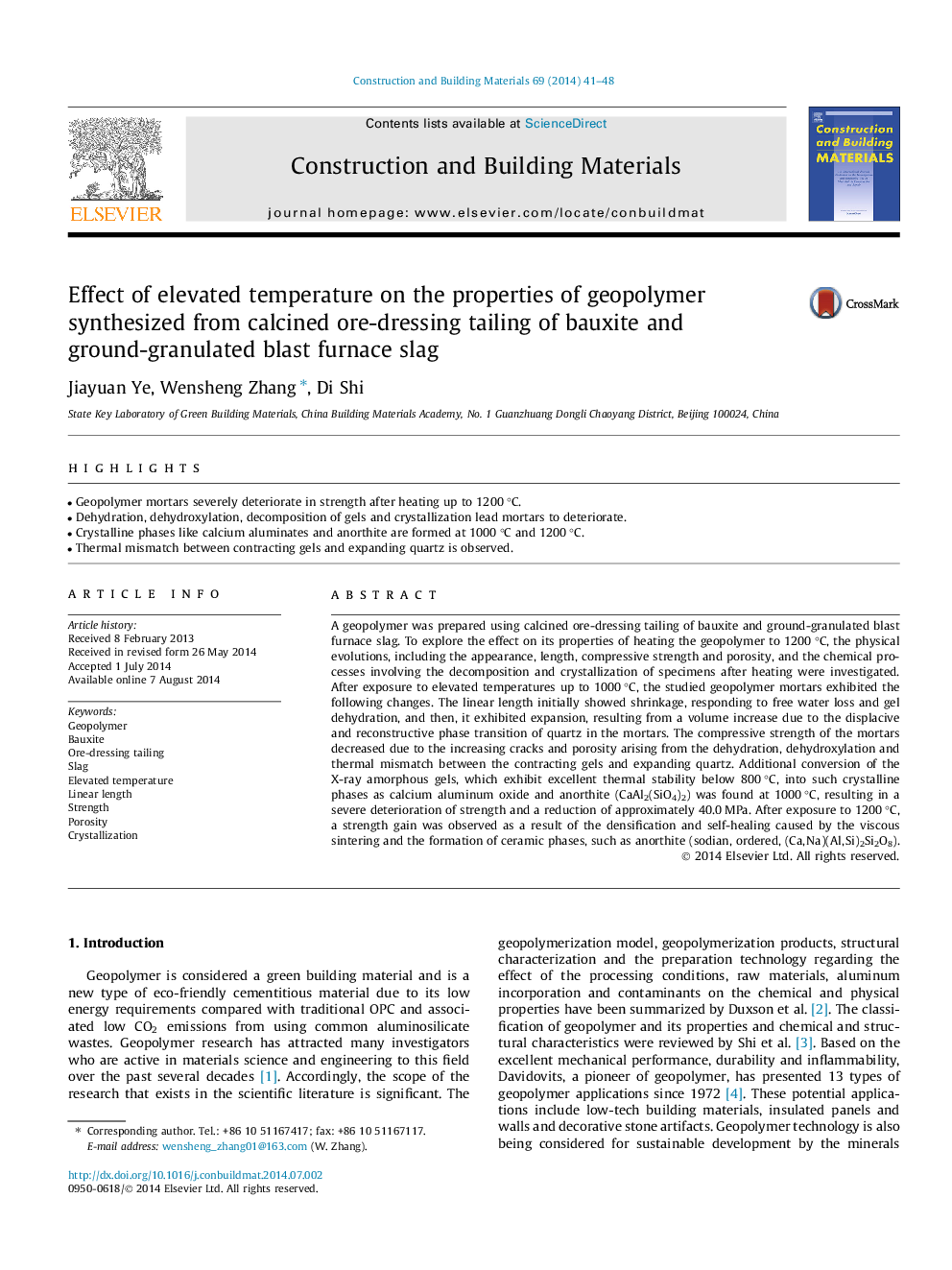| کد مقاله | کد نشریه | سال انتشار | مقاله انگلیسی | نسخه تمام متن |
|---|---|---|---|---|
| 257394 | 503586 | 2014 | 8 صفحه PDF | دانلود رایگان |
• Geopolymer mortars severely deteriorate in strength after heating up to 1200 °C.
• Dehydration, dehydroxylation, decomposition of gels and crystallization lead mortars to deteriorate.
• Crystalline phases like calcium aluminates and anorthite are formed at 1000 °C and 1200 °C.
• Thermal mismatch between contracting gels and expanding quartz is observed.
A geopolymer was prepared using calcined ore-dressing tailing of bauxite and ground-granulated blast furnace slag. To explore the effect on its properties of heating the geopolymer to 1200 °C, the physical evolutions, including the appearance, length, compressive strength and porosity, and the chemical processes involving the decomposition and crystallization of specimens after heating were investigated. After exposure to elevated temperatures up to 1000 °C, the studied geopolymer mortars exhibited the following changes. The linear length initially showed shrinkage, responding to free water loss and gel dehydration, and then, it exhibited expansion, resulting from a volume increase due to the displacive and reconstructive phase transition of quartz in the mortars. The compressive strength of the mortars decreased due to the increasing cracks and porosity arising from the dehydration, dehydroxylation and thermal mismatch between the contracting gels and expanding quartz. Additional conversion of the X-ray amorphous gels, which exhibit excellent thermal stability below 800 °C, into such crystalline phases as calcium aluminum oxide and anorthite (CaAl2(SiO4)2) was found at 1000 °C, resulting in a severe deterioration of strength and a reduction of approximately 40.0 MPa. After exposure to 1200 °C, a strength gain was observed as a result of the densification and self-healing caused by the viscous sintering and the formation of ceramic phases, such as anorthite (sodian, ordered, (Ca, Na)(Al, Si)2Si2O8).
Journal: Construction and Building Materials - Volume 69, 30 October 2014, Pages 41–48
